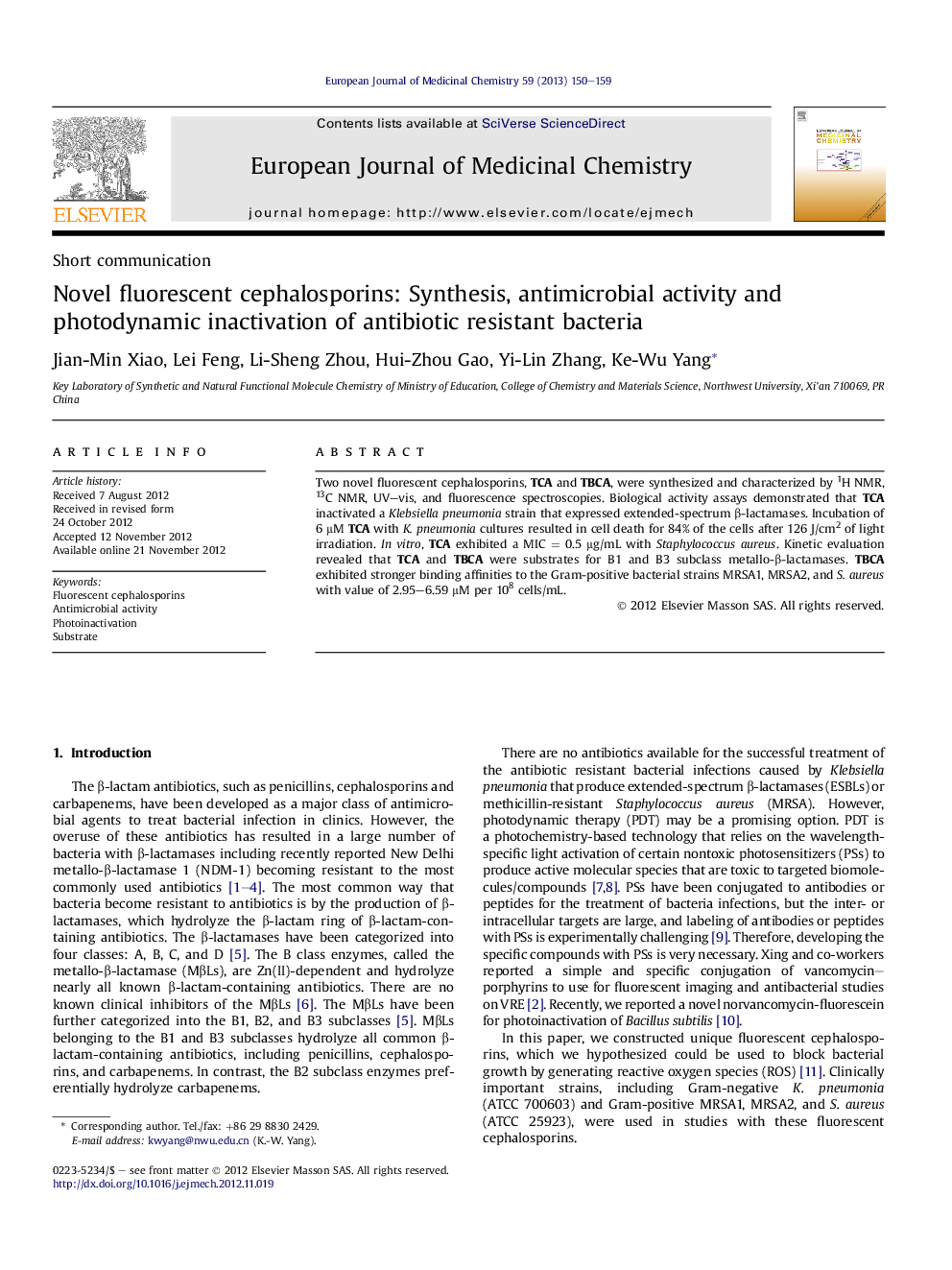| Article ID | Journal | Published Year | Pages | File Type |
|---|---|---|---|---|
| 1394412 | European Journal of Medicinal Chemistry | 2013 | 10 Pages |
Two novel fluorescent cephalosporins, TCA and TBCA, were synthesized and characterized by 1H NMR, 13C NMR, UV–vis, and fluorescence spectroscopies. Biological activity assays demonstrated that TCA inactivated a Klebsiella pneumonia strain that expressed extended-spectrum β-lactamases. Incubation of 6 μM TCA with K. pneumonia cultures resulted in cell death for 84% of the cells after 126 J/cm2 of light irradiation. In vitro, TCA exhibited a MIC = 0.5 μg/mL with Staphylococcus aureus. Kinetic evaluation revealed that TCA and TBCA were substrates for B1 and B3 subclass metallo-β-lactamases. TBCA exhibited stronger binding affinities to the Gram-positive bacterial strains MRSA1, MRSA2, and S. aureus with value of 2.95–6.59 μM per 108 cells/mL.
Graphical abstractPhotoinactivation of novel fluorescent cephalosporin TCA against K. pneumonia and fluorescence imaging of TBCA with Gram-positive bacterial strains MRSA2.Figure optionsDownload full-size imageDownload as PowerPoint slideHighlights► Two novel fluorescent cephalosporins TCA and TBCA were designed and characterized. ► TCA exhibited photoinactivation of K. pneumonia & antimicrobial effect for S. aureus. ► TBCA could label Gram-positive bacterial strains MRSA1, MRSA2 and S. aureus.
